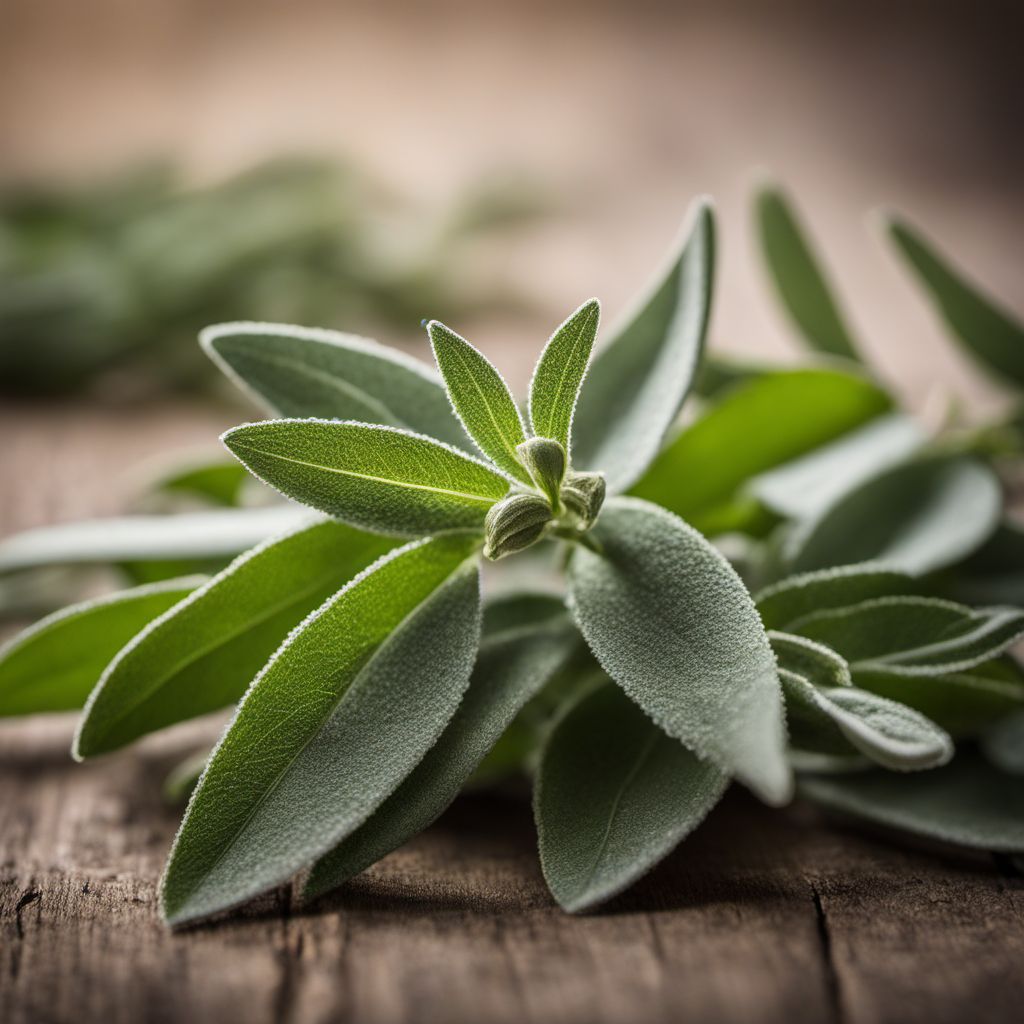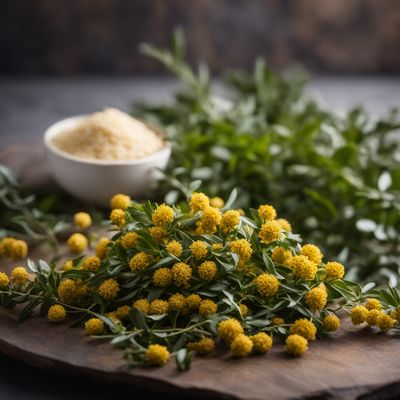
Ingredient
Sage
"The Wise Herb: Unveiling the Secrets of Sage"
With its soft, velvety leaves and grayish-green hue, sage is an aromatic herb that adds depth and complexity to a wide range of dishes. Known for its earthy and slightly peppery taste, sage offers a unique combination of flavors that can enhance both savory and sweet recipes. Its leaves have a slightly fuzzy texture, and when crushed or rubbed, they release a strong, fragrant aroma that is both soothing and invigorating.
Origins and history
Sage has a rich history that dates back to ancient civilizations. It is believed to have originated in the Mediterranean region and was highly valued by the Greeks and Romans for its medicinal properties. In medieval times, sage was considered a sacred herb and was used to ward off evil spirits. It later gained popularity in European cuisines, particularly in Italian and French cooking, where it became a staple herb in traditional dishes.
Nutritional information
Sage is a nutrient-dense herb that is low in calories but rich in essential vitamins and minerals. It is a good source of vitamin K, vitamin A, calcium, and iron, and also contains antioxidants that help protect the body against oxidative stress.
Allergens
Sage is generally considered safe for consumption and is not known to cause allergies in most individuals. However, individuals with known allergies to other herbs in the mint family, such as basil or oregano, may also be allergic to sage.
How to select
When selecting sage, look for fresh leaves that are vibrant in color and free from wilting or browning. The leaves should have a strong aroma when gently crushed or rubbed between your fingers. Avoid sage with yellow or black spots, as this may indicate decay or mold.
Storage recommendations
To maintain the freshness of sage, store it in a plastic bag or airtight container in the refrigerator. Alternatively, you can also preserve sage by drying the leaves and storing them in a cool, dark place in an airtight container. Properly stored sage can retain its flavor and aroma for up to six months.
How to produce
Sage can be easily grown in a home garden or in pots. It thrives in well-drained soil and requires full sun exposure. Plant sage seeds or seedlings in the spring or fall, and water regularly to keep the soil moist but not waterlogged. Harvest the leaves as needed, taking care not to remove more than one-third of the plant at a time to ensure continued growth.
Preparation tips
Sage can be used in various culinary preparations. To release its flavor, gently crush or chop the leaves before adding them to dishes. Sage pairs well with roasted meats, poultry, and vegetables, and is often used in stuffings, sauces, and soups. It can also be infused into oils or vinegars for added flavor. When using sage in cooking, it is best to add it towards the end of the cooking process to preserve its delicate flavors.
Substitutions
If sage is not available, you can substitute it with other herbs such as thyme or rosemary, which offer similar earthy and aromatic flavors.
Culinary uses
Sage is a versatile herb that is widely used in Mediterranean, Italian, and French cuisines. It is commonly used in dishes like roasted chicken, pasta sauces, stuffing, and risottos. Sage leaves can also be fried or baked to create crispy garnishes or used to infuse flavor into oils, vinegars, or even cocktails.
Availability
Sage is cultivated and readily available in many regions around the world, including Europe, North America, and parts of Asia.
More ingredients from this category

Curry herb
The Fragrant Spice: Curry Herb

Other species and hybrids of genus Salvia, not elsewhere mentioned
Exploring the Hidden Gems of the Salvia Genus: A Culinary Adventure

Greek sage
The Mediterranean Herb

Jamé's sage
The Aromatic Herb of Wisdom

Borage
The Starflower Herb: Unveiling the Secrets of Borage